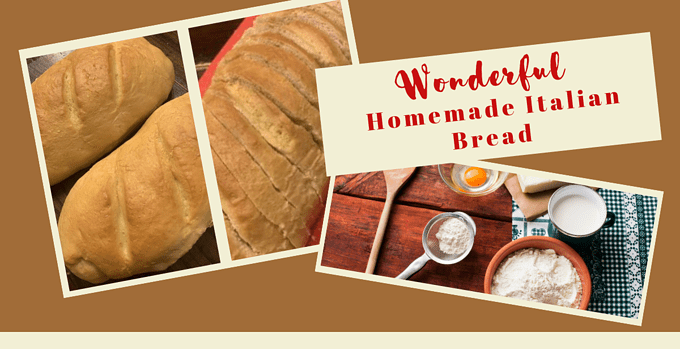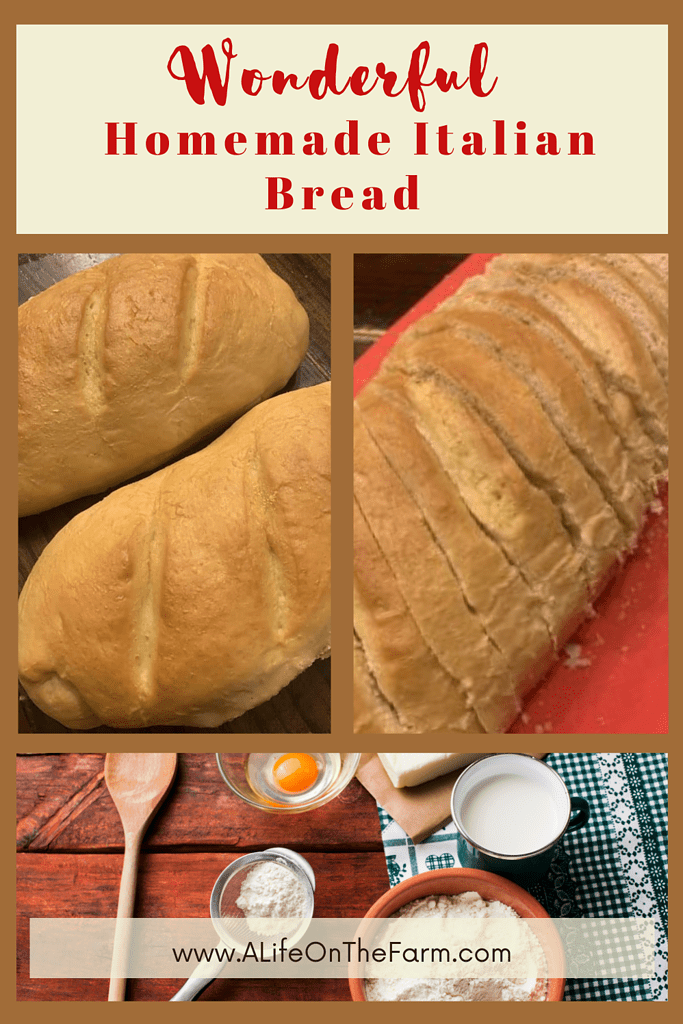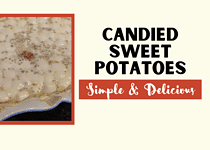Italian Bread
Italian Bread is such a delicious and versatile bread. The flavor is mild but lends itself well to all sorts of seasoning. The texture is soft, making it useful for a variety of culinary applications.
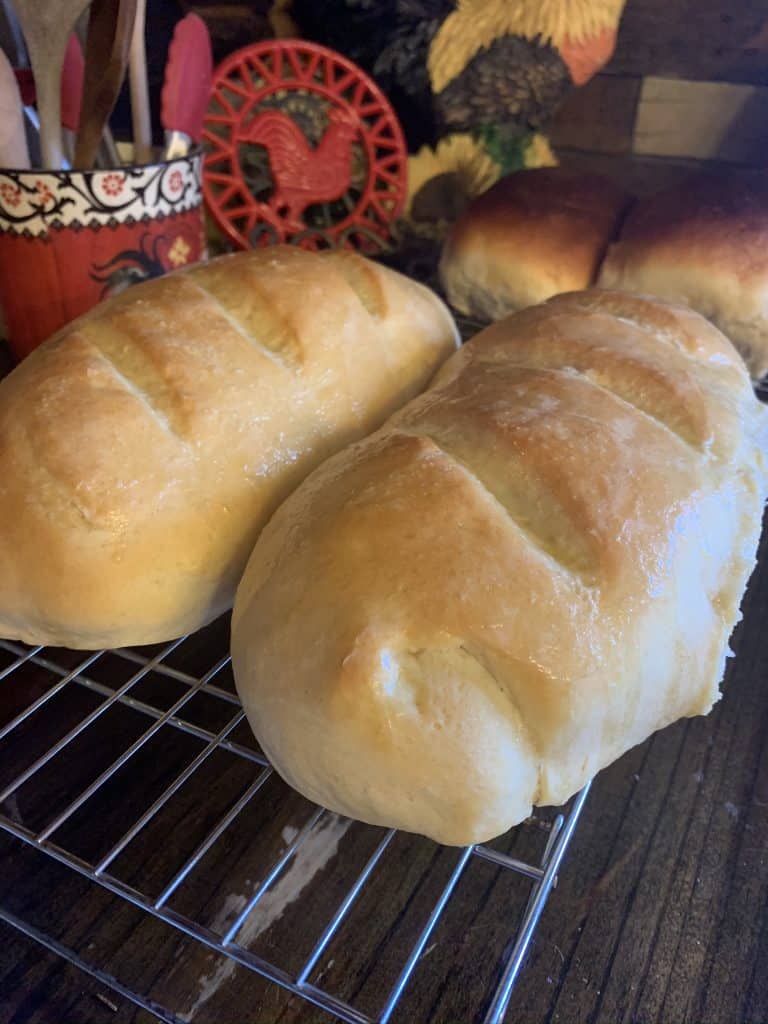
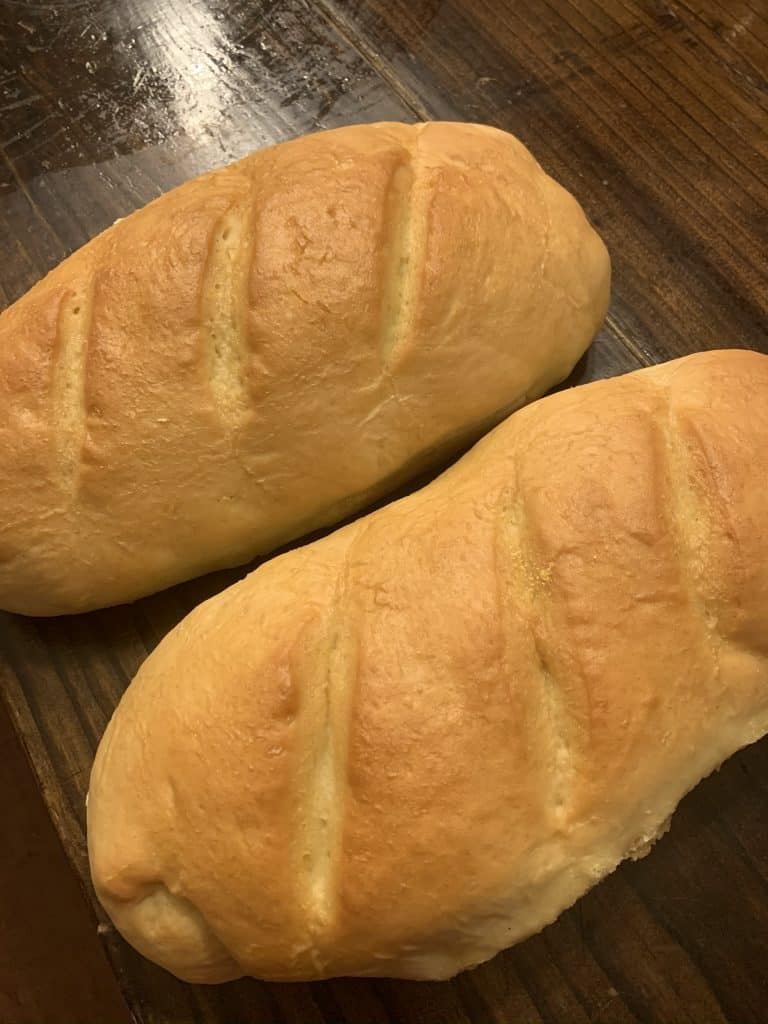

Italian Bread Uses
Italian bread can be used for so many different purposes. It makes terrific panini bread as well as garlic bread for a spaghetti dinner. In fact, this morning I used it to make my husband’s sandwiches for lunch. Italian bread is wonderful for toasting. It also makes awesome grilled cheese bread! But one of the best things about it is that it is also great just by itself as a snack!
History of and Information about Italian Bread
When I was doing some research on the origin of Italian Bread as well as the difference between that and what we typically know of as French Bread, I found a really terrific site that explains it better than I ever could. HewnBread discusses this in the following way.
FRENCH BREAD VS. ITALIAN BREAD: THE DIFFERENCE
Geography
French bread styles tend to be available nationwide. While they may have originated in particular regions long ago, today’s bakeries offer most of them. There are still regional specialties, such as fougasse from Provence, made with local ingredients such as olives or olive oil, sundried tomatoes, anchovies and/or herbs (similar to the Italian focaccia); and couronne, in the shape of a ring. Italian loaves vary by region, from pane casareccio in Puglia and its cousin, pane genzano in Rome, both with crusty tops, to softer sesame-topped loaves from Sicily.
Ingredients
French bread is typically made from wheat flour, water, yeast and salt. By law in France, the long loaves and boules (round loaves) cannot have added oil or fat. Brioche, a soft loaf with a high egg and butter content, is considered a pastry. Italian bread often contains a bit of milk or olive oil, and sometimes a bit of sugar.
Shape
French bread tends to be longer and narrower. Italian bread loaves tend to be shorter and plumper.
Texture
French bread tends to be hard and crusty on the outside, with a light and soft crumb. Italian bread can also have a hard crust, but the crumb tends to be denser.
Baking Method
French bread can be cooked in any oven. Italian bread is traditionally baked in a flat stone oven. This can imbue the bread with a tiny amount of smoky flavor.
Italian Bread
Difficulty: Easy2
loaves20
minutes20
minutes2
hoursA simple to make, soft and delicious loaf of bread that is versatile enough to be used in many ways.
Ingredients
1 1/2 tablespoons active dry yeast
2 teaspoons sugar
2 cups warm water (about 110 degrees)
About 5 cups all-purpose flour
4 tablespoons olive oil
2 teaspoons salt
Directions
- In a large bowl (I use my stand mixer bowl), combine yeast, sugar and warm water. Let stand 5-10 minutes – Yeast will become foamy/bubbly.
- Add 2 cups of flour, olive oil and salt and mix. Continue adding flour and mixing until it is all incorporated. You can then allow a mixer with dough hook to knead the dough for about 5 minutes or turn it out on a floured surface and knead by hand for about 10 minutes.
- When kneaded, put dough into a well-oiled bowl and cover with a slightly damp towel. Allow to sit for about an hour or until doubled.
- After doubled, punch down the dough and separate into two loaves, shaping into a batard about 12 inches long. Place on an oiled cookie sheet, cover and allow to rise once more, for about 20 min.
- Use a serrated knife to make a few 1/4 inch deep slits on the top of the loaf. Bake at 400 degrees for about 20 minutes or until golden brown. Cool on a wire rack.
Making This Super Simple Bread
Regardless its history, this wonderful bread is extremely easy to make, but it makes a very impressive loaf of bread… 2 actually. Once you get started with this bread, you will always want it!
You can also refer to my Amish Sweet Bread recipe, as I have some really good Bread Making Tips there for you.
Never Miss Anything!
MORE WAYS TO CONNECT
We also, as a homesteading family, have three additional blogs that might interest you. Two Oaks Farm Talk concerns the more technical side of homesteading. We discuss subjects like gardening, food prep, and farm building and construction with lots of tutorials!
Farm Raised Family is basically a hub for everything under the Two Oaks Farmstead umbrella. You can learn a great deal about all parts of the farmstead there. The Farm Raised Family blog focuses on financial matters such as budgeting, saving, and more and on current events affecting families.
You can also have a more in depth look at all that we do by visiting our Two Oaks Farmstead YouTube Channel and be sure to subscribe so that you don’t miss a thing!
Farm Life and Freedom is the new podcast we are in the process of launching! It is going to be so much fun!
Two Oaks Farmstead is the farm store… the one that holds the umbrella! Check us all out and join us, not only on our blogs and Farm Life and Freedom podcast but come join the fun on Facebook, Instagram, Twitter… wherever you get social!

